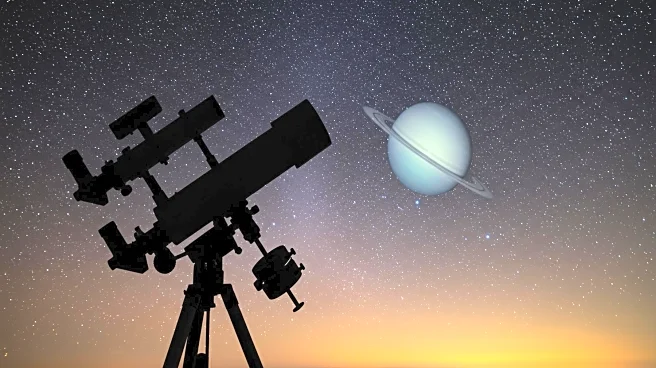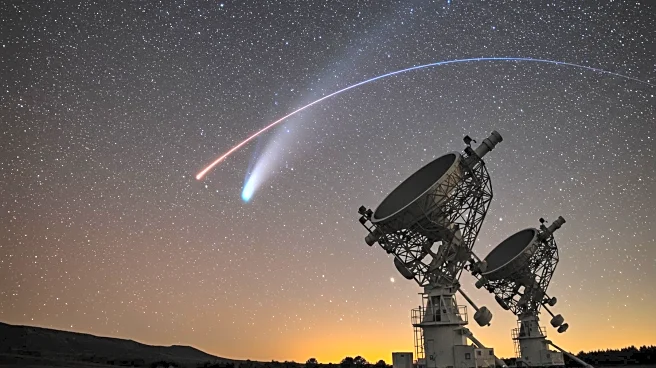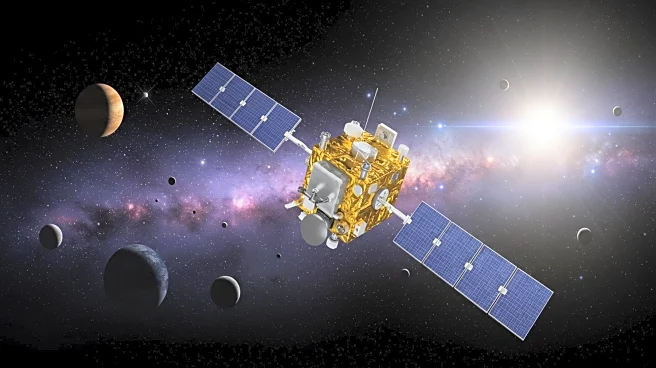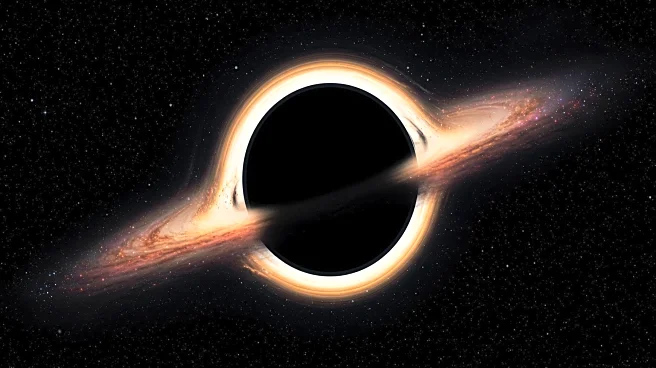What's Happening?
In April 2025, NASA conducted a stellar occultation event involving Uranus, which provided new insights into the planet's atmosphere. By analyzing how light from a distant star was altered as it passed through Uranus's atmosphere, researchers gained information on the atmospheric temperature, density, and pressure. This rare celestial alignment allowed scientists to refine their understanding of Uranus's atmospheric dynamics, which have been largely enigmatic since the last significant observations three decades ago. The findings are crucial for preparing future missions aimed at exploring the planet's atmospheric layers.
Why It's Important?
The data from the Uranus stellar occultation event is significant for planetary science, offering a deeper understanding of the atmospheric conditions of this distant ice giant. These insights can inform future exploration missions and enhance comparative studies with Earth's atmosphere. The event underscores the importance of stellar occultations in probing distant planetary atmospheres, providing valuable information that can influence the direction of future research and exploration efforts.
What's Next?
The findings from the Uranus stellar occultation will be used to plan future missions that aim to explore the planet's atmospheric layers more thoroughly. Researchers will continue to analyze the data to refine models of Uranus's atmospheric dynamics, potentially leading to new discoveries about the planet's composition and behavior. The event may also inspire similar studies of other distant planets, expanding our understanding of planetary atmospheres across the solar system.











